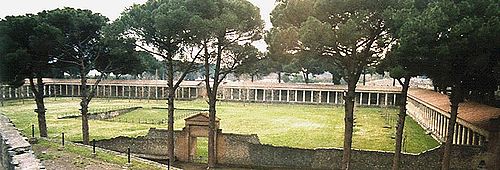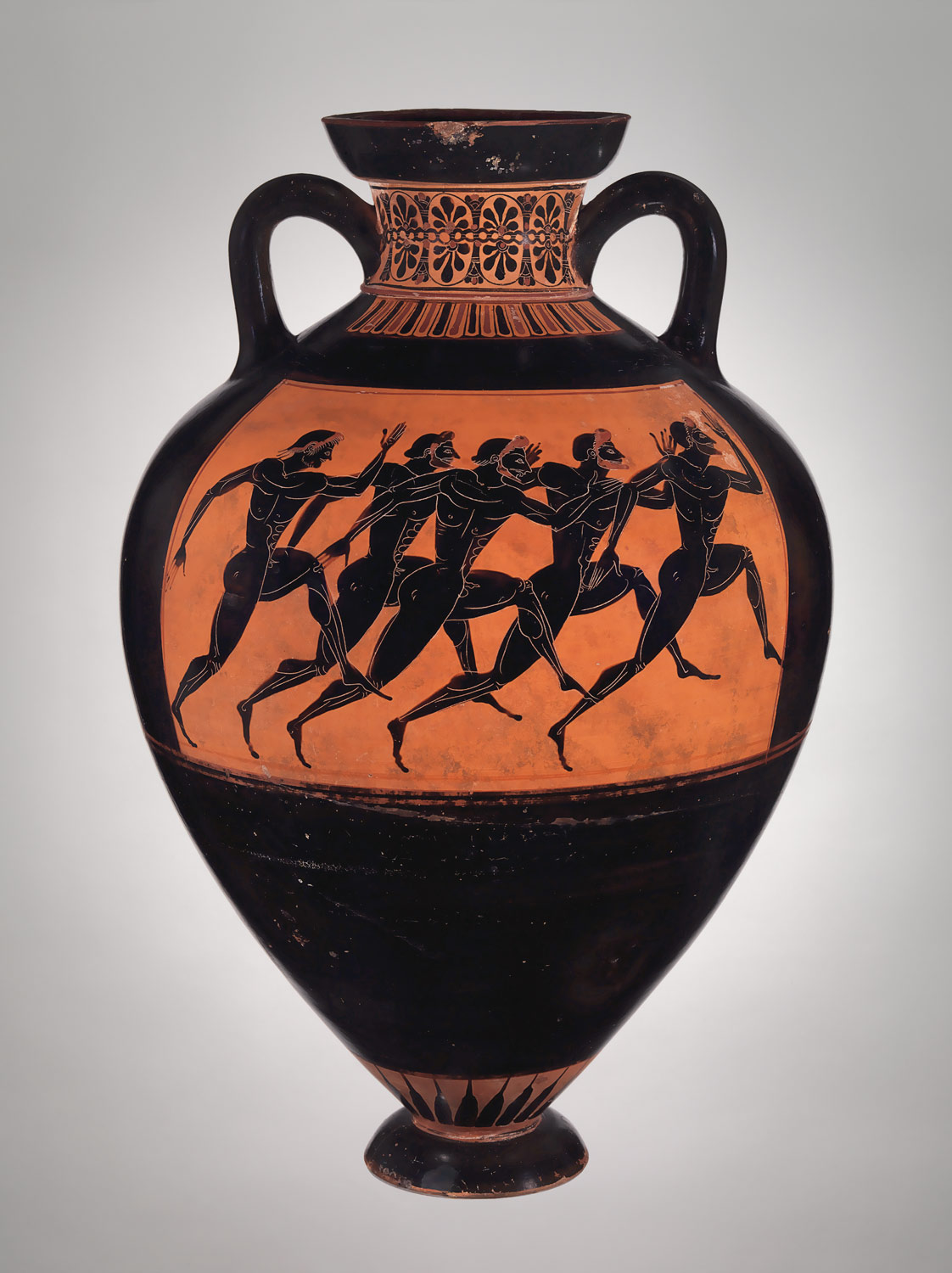[Zoraya Almonte]
ORIGINS OF THE GYMNASIUM
The word gymnasium comes from the Greek words gumnazo [which means exercise] and gumnos [which means naked]. Thus, in Ancient Greece the gymnasium was a place where males would exercise and train in the nude. The gymnasium was open to all male citizens of Greek cities. The gymnasium “featured a running track, a wrestling court, and fields for throwing the javelin and discus” (Encyclopedia: Ancient Greek World; pg.141) The gymnasium became an important part of Greek society, it was a space where young Greek men could improve their fitness and train for warfare.
 [Ancient Greece Gymnasium]
[Ancient Greece Gymnasium]
PARTICIPATES OF THE GYMNASIUM
The gymnasiums were “usually state-run institutions open to men and boys of the citizen classes. Within this group, the majority of regular customers would be aristocrats and other leisured rich, who did not need to work for a living.” (Encyclopedia of the Ancient Greek World: pg. 142) The citizen class wasn’t just made up of wealthy individuals for example in the city Athens “for a person to be a citizen, his/her father and mother both had to be Athenians citizens.” (The Ancient Greeks: An Introduction; pg. 201). However, women weren’t allowed to use the gymnasiums or even participate in the Olympics games. “Only Greek citizens were allowed to compete in the games, which meant the competition was open to males only. Women and slaves were not allowed to take part.” (Ancient Olympics: pg. 11) Although women were considered citizens, they didn’t have the same rights as men, thus they weren’t allowed to participate in a male dominant sport. Besides Sparta, women “were banned from training in gymnasia and from competing alongside men at the Pan-Hellenic games or even watching male sporting competitions.” (The Temple of Perfection: A History of the Gym; pg.24) Married women weren’t allowed to watch or even visit the games.
 [Wrestling Scene]
[Wrestling Scene]
EVOLUTION OF THE GYMNASIUM
Although the gymnasium served as a place for young man to train for warfare, over time it became a place for all male citizens of all ages to expand their education. “Many cities had an odeion, [like] the auditorium of the large gymnasium in Pergamon, which was used for public lectures and for competitions of poets, orators, and musicians.” (History, Culture, and Religion of the Hellenistic Age; pg. 99) In 335 BCE , Aristotle, the ancient Greek philosopher, moved to “Athens and founded his own school in a gymnasium known as the Lyceum.” (History, Culture, and Religion of the Hellenistic Age; pg. 116) The gymnasium became a center of intellectual endeavor.

SOURCE
- Koester, Helmut. History, culture, and religion of the Hellenistic Age. New York: W. de Gruyter, 1995. Print.
- Gaff, Jackie. Ancient Olympics. Jordan Hill, Oxford: Heinemann, 2004. Print.
- “Encyclopedia of the Ancient Greek World.” Google Books. N.p., n.d. Web. 06 Mar. 2017.
- “The Ancient Greeks.” Google Books. N.p., n.d. Web. 06 Mar. 2017.
- “The Temple of Perfection: A History of the Gym.” Google Books. N.p., n.d. Web. 06 Mar. 2017.